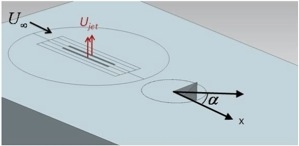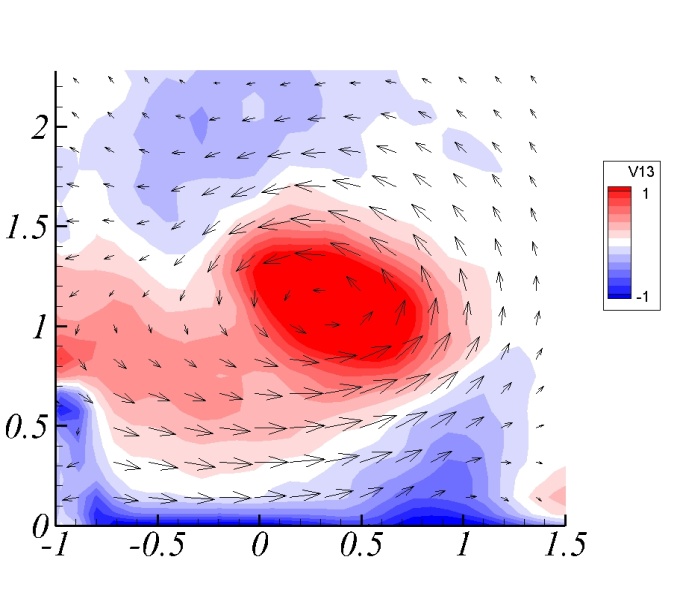Flow control is an emerging field of study in fluid mechanics. Flow control is the ability to manipulate a flow field to affect a desired change is of immense practical importance. Most flow control techniques have focused on control of separation, which is achieved either through passive or active techniques. Passive devices, such as vortex generators or ramps, are non-fluidic devices, which are attached to the surface to control separation and enhance mixing. Passive devices are robust and require no energy input. Active devices include steady or unsteady jets that are characterized by a net energy input into the flow. Recently, passive and active devices have been used in unison to create a Hybrid “fail-safe” device which proved to be more effective than either device on its own and is the focus of this study.

Figure 1: Fail-Safe actuator, consisting of a pair of synthetic jets upstream of a vortex generator

Figure 2: Superimposed time-average streamwise vorticity and in-plane velocity vectors; Only vortex generator (top) and combined vortex generator and synthetic jets (bottom)
